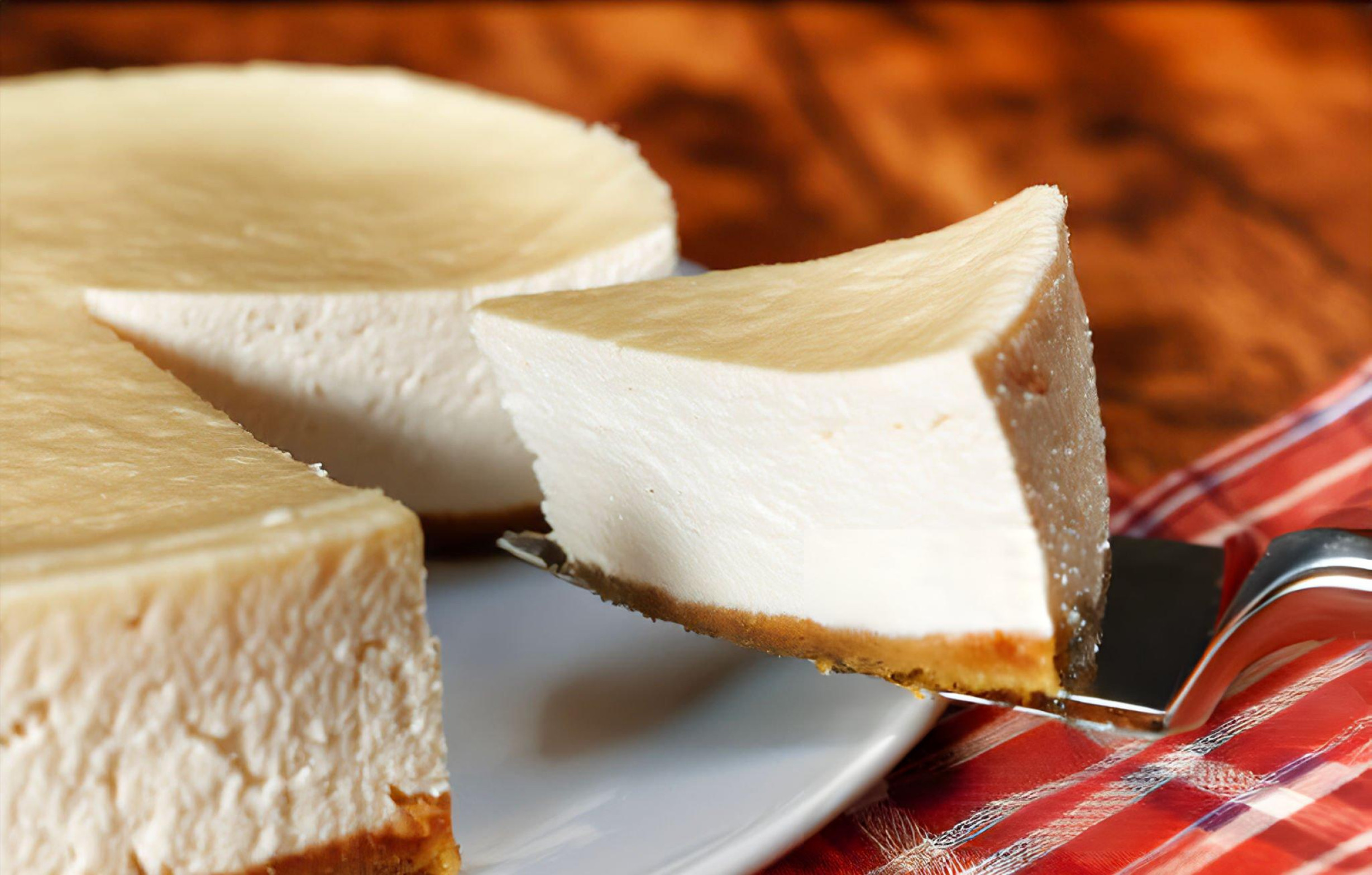
New York Cheesecake Recipe
Dive into the creamy richness of a classic New York Cheesecake, where each bite offers a perfect balance of sweetness and tangy notes.
Print
Pin
Servings: 12 slices
Ingredients
For the cheesecake filling
- 900 g full-fat soft cheese such as Philadelphia
- 250 g golden caster sugar
- 3 tbsp plain flour
- 1 ½ tsp vanilla extract
- Finely grated zest of 1 lemon about 2 tsp
- 1 ½ tsp lemon juice
- 3 large eggs plus 1 yolk
- 284 ml carton soured cream
For the crust
- 140 g digestive biscuits crushed into fine crumbs (add 2 extra biscuits for a thicker base)
- 85 g butter melted, plus extra for greasing the tin
- 1 tbsp golden caster sugar or granulated sugar
For the soured cream topping
- 142 ml carton soured cream
- 1 tbsp golden caster sugar
- 2 tsp lemon juice
Instructions
- Start by adjusting an oven rack to the center position. Preheat your oven to 180°C/160°C fan/gas mark 4.
- Prepare a 23cm springform cake tin by lining its base. Place a square piece of parchment paper or foil on top of the base, then secure the side ring, ensuring the excess paper or foil extends from the bottom.
- For the crust, melt 85g of butter in a medium-sized saucepan. Stir in the crushed digestive biscuits and 1 tbsp of sugar until the mixture is well-moistened and crumbly.
- Firmly press the crumb mixture into the base of the prepared tin. Bake for 10 minutes, then set it aside on a wire rack to cool as you prepare the cheesecake filling.
- Increase the oven temperature to 220°C/200°C fan/gas mark 7. Using a stand mixer fitted with a paddle attachment, beat the full-fat soft cheese on medium-low speed until it becomes creamy, which should take about 2 minutes.
- With the mixer on low, gradually add the golden caster sugar, followed by the plain flour and a pinch of salt. Scrape down the sides of the bowl and the paddle attachment twice during the mixing process to ensure everything is well combined.
- Switch to a whisk attachment. Add the vanilla extract, lemon zest, and lemon juice. Whisk in the eggs and the extra yolk, one at a time, ensuring the mixture is thoroughly combined. Be sure to scrape the bowl and whisk attachment at least twice.
- Stir the soured cream until smooth, then measure out 200ml (about three-quarters of the carton). With the mixer on low speed, gradually incorporate the measured soured cream, reserving the remainder for later. Whisk until the batter is smooth and airy, but avoid overmixing.
- Brush the sides of the springform tin with melted butter, then place the tin on a baking sheet. Pour in the cheesecake batter. If there are any lumps, smooth them out with a knife. The surface should be as even as possible. Bake for 10 minutes.
- Lower the oven temperature to 110°C/90°C fan/gas mark ¼ and bake for an additional 45 minutes. The cheesecake should have a slight wobble in the center when gently shaken.
- To achieve a creamy texture, turn off the oven and leave the door slightly ajar, allowing the cheesecake to cool inside for 2 hours. If you prefer a drier texture, keep the oven door closed during this cooling period. Expect the cheesecake to develop a slight crack on top as it cools.
- For the topping, combine the reserved soured cream with an additional 142ml carton of soured cream, 1 tbsp golden caster sugar, and 2 tsp lemon juice. Spread this mixture evenly over the cooled cheesecake, reaching all the way to the edges. Cover the cheesecake loosely with foil and refrigerate for at least 8 hours, or preferably overnight.
- When ready to serve, run a round-bladed knife around the edge of the tin to release the cheesecake. Unlock the springform ring, transfer the cheesecake to a plate, and carefully slide out the parchment paper from underneath. Your New York cheesecake is now ready to enjoy!